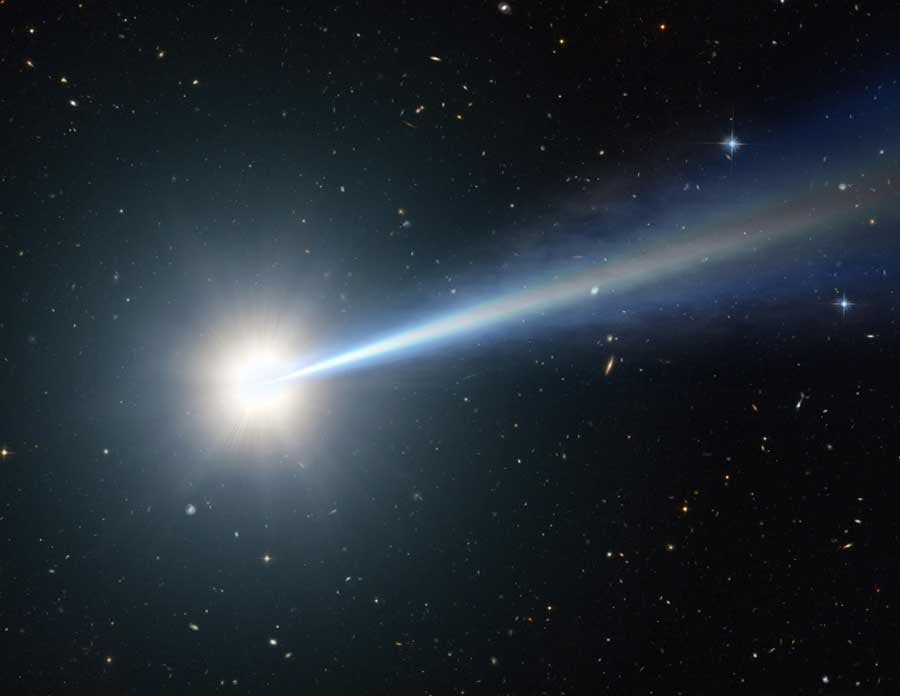Astronomers at the California Institute of Technology (Caltech) and Ecole Polytechnique Federale de Lausanne (EPFL) in Switzerland have discovered the first known case of a distant galaxy being magnified by a quasar acting as a gravitational lens. The discovery is based in part on observations done at the W. M. Keck Observatory on Hawaii’s Mauna Kea.
Quasars, which are extraordinary luminous objects in the distant universe, are thought to be powered by supermassive black holes in the cores of galaxies. A single quasar could be a thousand times brighter than an entire galaxy of a hundred billion stars, which makes studies of their host galaxies exceedingly difficult. The significance of the discovery, the scientists say, is that it provides a novel way to understand these host galaxies.
“It is a bit like staring into bright car headlights and trying to discern the color of their rims,” said Frederic Courbin of EPFL. Using gravitational lensing, he said, “We now can measure the masses of these quasar host galaxies and overcome this difficulty.”
According to Einstein’s general theory of relativity, if a large mass — such as a big galaxy or a cluster of galaxies — is placed along the line of sight to a distant galaxy, the part of the light that comes from the galaxy will split. Because of this, an observer on Earth will see two or more close images of the now-magnified background galaxy.
The first such gravitational lens was discovered in 1979, and it produced an image of a distant quasar that was magnified and split by a foreground galaxy. Hundreds of cases of gravitationally lensed quasars are now known. But, until the current work, the reverse process — a background galaxy being lensed by the massive host galaxy of a foreground quasar — had never been detected.
Using gravitational lensing to measure the masses of distant galaxies independent of their brightness was suggested in 1936 by Caltech astrophysicist Fritz Zwicky, and the technique has been used effectively for this purpose in recent years. Until now, it had never been applied to measure the masses of quasar hosts themselves.
To find the cosmic lens, the astronomers searched a large database of quasar spectra obtained by the Sloan Digital Sky Survey (SDSS) to select candidates for “reverse” quasar-galaxy gravitational lensing. Follow-up observations of the best candidate — quasar SDSS J0013+1523, located about 1.6 billion light-years distant — using the W. M. Keck Observatory’s 10-meter telescope, confirmed that the quasar was magnifying a distant galaxy, located about 7.5 billion light-years away.
“We were delighted to see that this idea actually works,” said Georges Meylan from EPFL. “This discovery demonstrates the continued utility of gravitational lensing as an astrophysical tool.”
“Quasars are valuable probes of galaxy formation and evolution,” said George Djorgovski from Caltech. Furthermore, he said, “Discoveries of more such systems will help us understand better the relationship between quasars and the galaxies which contain them and their coevolution.”










